Bilder fra P. Ole Martins prestevielse og primitz
Noen bilder, tatt av Mats Tande, er allerede lagt ut på katolsk.no – fra prestevielsen her:
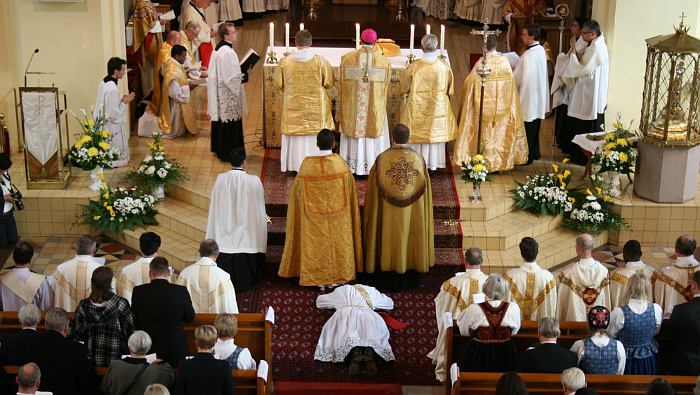
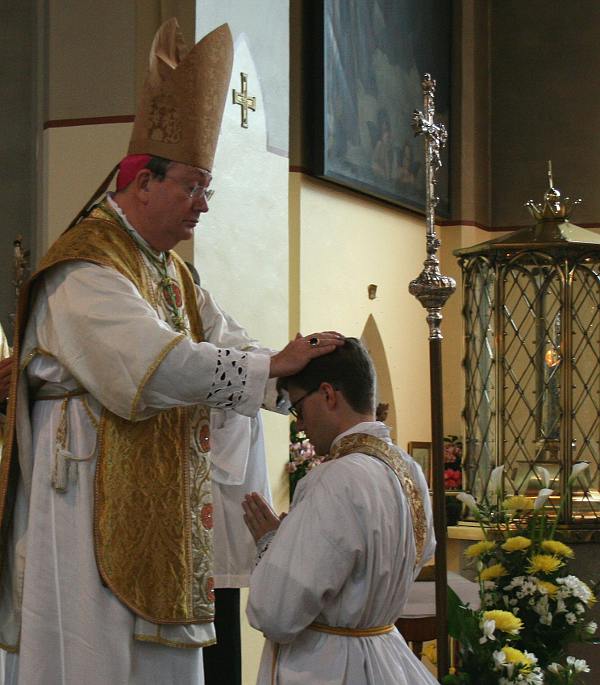

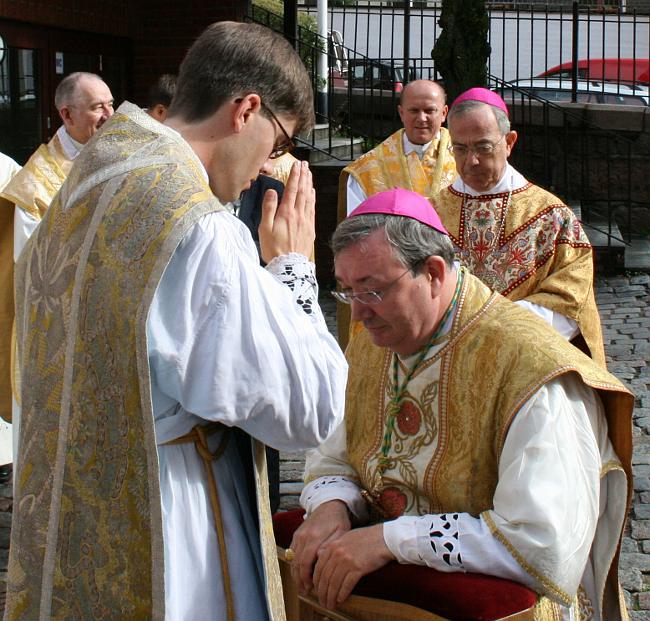
Og her ett av flere bilder fra p Ola Martins første hellige messe – ved avslutningen av messen.
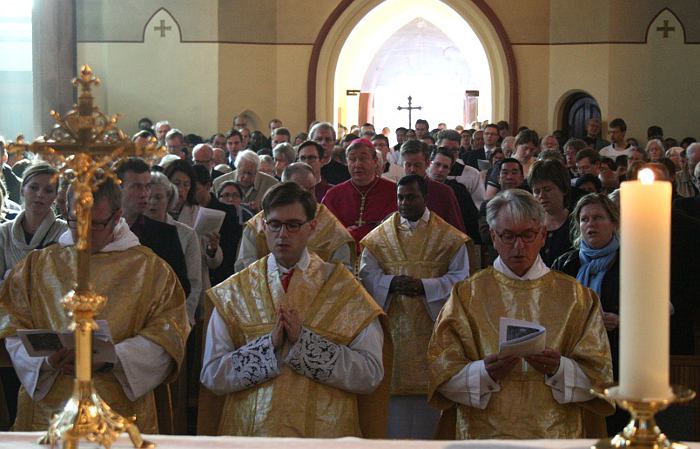
Noen bilder, tatt av Mats Tande, er allerede lagt ut på katolsk.no – fra prestevielsen her:




Og her ett av flere bilder fra p Ola Martins første hellige messe – ved avslutningen av messen.

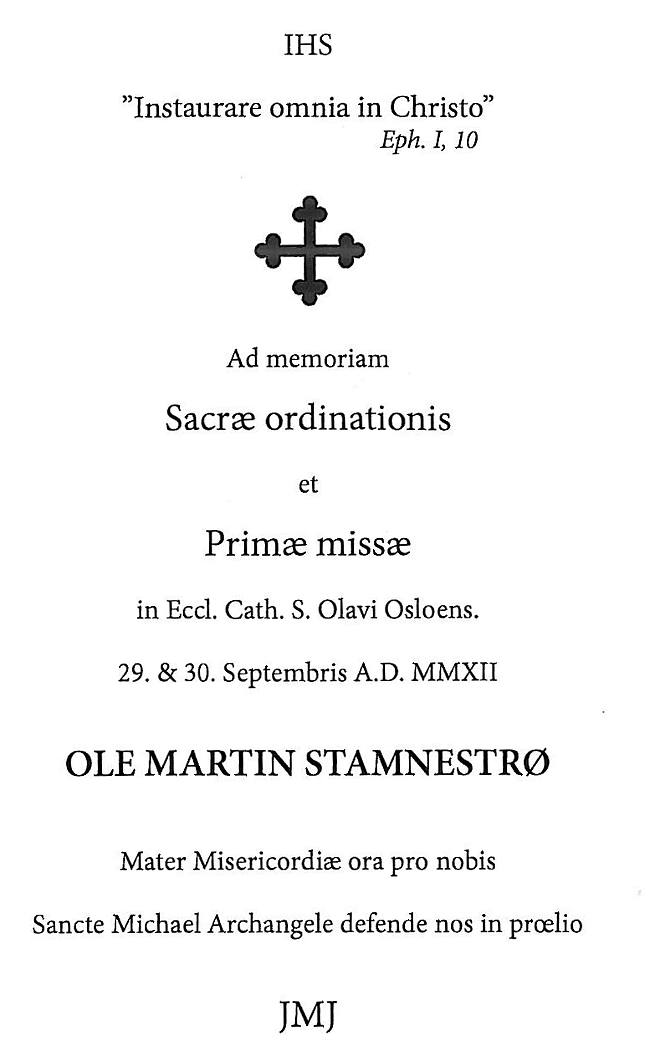
På bildet over ser man bønnekortet vi mottok etter å ha blitt velsignet av den nyordinerte presten – og kysset hans (ny)salvede hender. Ordinasjonsmessen var også meget fin, og mottagelsen etterpå særdeles hyggelig.
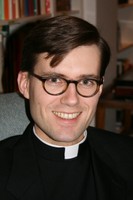 Jeg gleder meg stort til å delta i Ola Martin Stamnestrøs prestevielse i morgen. På katolsk.no leser vi følgende om messen (der jeg har meldt min tilstedeværelse, med til primitsen kan jeg dessverre ikke komme):
Jeg gleder meg stort til å delta i Ola Martin Stamnestrøs prestevielse i morgen. På katolsk.no leser vi følgende om messen (der jeg har meldt min tilstedeværelse, med til primitsen kan jeg dessverre ikke komme):
Lørdag 29. september 2012 prestevies diakon Ole Martin StamnestrøFoto: Eskil Skjeldal av biskop Bernt Eidsvig Can.Reg. av Oslo. Prestevielsen finner sted i St. Olav domkirke, Oslo, klokken 11.00.
Søndag 30. september feirer den nyviede presten sin først hellige messe (primiss) kl. 11.00 i samme kirke.
Alle er hjertelig velkomne!
Her er en liten oppsummering av dennes ukes onsdagsaudiens – liturgien kommer først og er det viktigste:
Pope Benedict XVI spoke about the liturgy at his weekly public audience on September 26, continuing his series of talks on the “school of prayer.” Citing the words of Vatican II, the Pope reminded his audience that “the word ‘liturgy’ means the participation of the People of God in the work of God.” The work of God, he continued, is the work of salvation, the mystery of Christ’s death and resurrection. It is natural, therefore, that the first statement from the Second Vatican Council was on the liturgy, the Pope said. The Council fathers recognized the need to structure the work of the Church around the liturgy. “Where the gaze on God is not decisive, everything becomes disoriented,” Pope Benedict observed. “The fundamental criterion for the liturgy is that it should be oriented towards God,” the Pope said. He repeated later that “the first requirement for a good liturgical celebration is that it be prayer and dialogue with God, first listening then responding.” «We celebrate and experience the liturgy well only if we maintain an attitude of prayer,” the Pope said.
Hele pavens preken (på italiensk) kan leses på engelsk her.
I disse dager leser vi i de tradisjonelle tidebønene fra Judits bok, en av de deuterokanoniske/ apokryfe bøkene som også jeg kjenner ganske dårlig (jeg har lest de to Makkabeerbøkene grundigere). I dag leste vi følgende dramatiske tekster (de fins på norsk på bibel.no, man må krysse av ekstra for apokryfene):
Jdt 12:10-13 (14)
Den fjerde dagen holdt Holofernes et gjestebud for sine nærmeste tjenere; han innbød ikke noen av sine embetsmenn. Han sa til evnukken Bagoas, som hadde tilsyn med alt det han eide: «Gå av sted og overtal den hebreerkvinnen som er hos deg, til å komme hit og spise og drikke med oss. Det ville jo være en skam for oss om vi lot en slik kvinne gå uten å ha hatt omgang med henne. Hun ville le oss ut hvis vi ikke tok henne.» Bagoas forlot Holofernes og gikk inn til Judit og sa til henne: «Vakre unge kvinne, vær ikke blyg, men kom med til min herre, så du kan bli hedret av ham og drikke deg glad på vin sammen med oss. Du skal i dag bli som en av assyrernes døtre som gjør tjeneste ved Nebukadnesars hoff.» Judit svarte ham: «Hvem er vel jeg, at jeg skulle si min herre imot? Alt som er til glede for ham, vil jeg skynde meg å gjøre. Det vil være min glede like til min dødsdag.»Judit 13:1-10 (11)
Da det led mot natt, brøt tjenerne hans opp i hast. Bagoas lukket teltet utenfra slik at oppvarterne ikke skulle forstyrre sin herre Holofernes. De gikk da og la seg, for de var alle trette fordi gjestebudet hadde vart så lenge. Bare Judit ble værende i teltet. Holofernes lå utstrakt på sengen, helt døddrukken. Judit hadde sagt til tjenestepiken sin at hun skulle stå utenfor soverommet hennes og vente til hun kom ut, slik hun hadde gjort hver dag; hun hadde nemlig sagt at hun ville gå ut for å be. Det samme hadde hun også fortalt til Bagoas. Da nå alle hadde forlatt henne, både høy og lav, og det ikke var noen igjen i soverommet, gikk Judit fram til Holofernes’ seng og bad stille: «Herre, Gud, du som har all makt, se i nåde til det mine hender nå skal gjøre for at Jerusalem skal bli forherliget. Nå er tiden inne! Ta deg av ditt eiendomsfolk, og la det jeg har fore lykkes, så de fiender som har reist seg mot oss, blir tilintetgjort.» Så gikk hun bort til sengestolpen ved Holofernes’ hodegjerde og tok sverdet hans ned av den. Hun stilte seg inntil sengen, tok tak i håret hans og sa: «Herre, Israels Gud, gi meg styrke!» Så slo hun til to ganger av all sin kraft mot nakken hans og hogg hodet av ham. Deretter veltet hun kroppen ned fra sengen og rev myggnettet ned fra stolpene. Straks etter forlot hun teltet og gav Holofernes’ hode til tjenestepiken, som kastet det opp i sekken sin.
Store deler av 1900-tallet (jeg vet ikke helt hvor lenge) fram til liturgireformen i 1970 ble det bedt forbønner på norsk etter prekenen i (de latinske) søndagsmessene. Prekenen var nemlig det eneste sted presten kunne sin noe som helst (av egne ord og på norsk) i messen, ellers skulle han bare be de foreskrevne bønner og lese de foreskrevne tekster – på latin. Jeg ble i går kveld gjort oppmersom på at et eksempel på disse forbønnene er blitt trykket i samlingen av mange hverdags- og søndagsforbønner som Den katolske Kirke i Norge nå gir ut. Eksempelet er fra 1938, og der står det: «Det apostoliske vikariat [Oslo] sin Søndagsbok – som inneholder Messens faste bønner, St. Olav Forlag 1938, s. 29-30, med overskrift: «Efter prekenen leses hver søndag: Almindelig kirkebønn.»» Her følger bønnen (Jeg har korrigert rettskrivingen litt.):
Allmektige, evige Gud, vår Herre og himmelske Fader, se med din uendelige miskunns øyne ned på vår trengsel, elendighet og nød. Miskunn deg over alle troende kristne, fordi din enbårne Sønn, vår Herre og Frelser Jesus Kristus, for deres skyld frivillig har gitt seg over i syndernes hender og utgytt sitt dyre blod på korsets hellige tre. Ved var Herre Jesus Kristus ber vi deg, nådigste Fader, at Du vil vende bort fra oss de straffer vi har fortjent: farer i nåtid og fremtid, opprør, krig, dyrtid, sykdommer og sørgelige og ulykkelige tider. Velsign, Herre, din Kirkes overhode, vår hellige far pave ….. og den overhyrde han har gitt oss. Velsign også vårt lands konge, og hele kongehuset. Opplys og styrk den kirkelige og verdslige øvrighet i alt godt, så den kan fremme det som er til din guddoms ære, til vår frelse og til hele kristenhetens vel.
Du fredens Gud, unn oss sann enighet i troen uten strid og ufred. Omvend våre hjerter til sann bot og bedring, tenn i oss din kjærlighets ild, gi oss hunger og iver efter din rettferd, så vi som lydige barn kan tekkes deg i liv og i død.
Vi ber også som Du, Gud, vil at vi skal be, for våre venner og fiender, for de friske og syke, for alle sorgfulle og sørgende kristne, for de levende og de døde. Til deg, Herre, vier vi alt vårt yrke og all vår ferd, vårt liv og vår død. La oss her nyte din nåde og en gang oppnå sammen med alle dine hellige, å love, ære og prise deg i evig glede og salighet. Gi oss dette, Herre, himmelske Fader, ved Jesus Kristus, din elskelige Sønn, våt Herre og Frelser, som lever og styrer med deg og den Hellige Ånd, den ene og sanne Gud, i all evighet. Amen.
La oss be for våre velgjørere og for dem som har bedt om vår forbønn.
Fader vår .… – Hill deg, Maria …. – Ære være Faderen ….
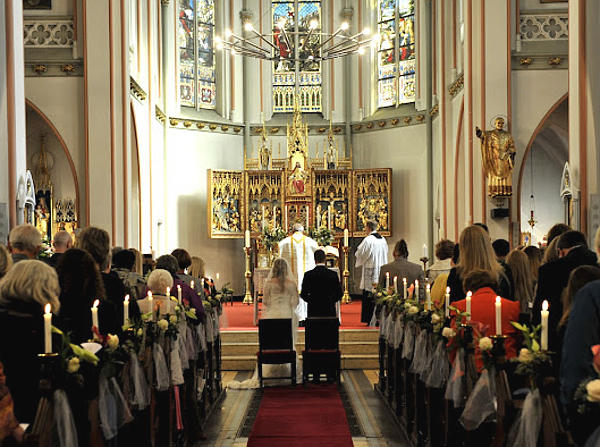
Det flotte bildet over er fra en katolsk vielse i København for noe dager siden, der Kirkens tradisjonelle liturgi ble brukt – i selve vielsen (som komemr først) og i selve brudemessen. Rorate Cæli skriver om dette bl.a.:
The first wedding in Denmark according to the Traditional Roman Rite since the late 1960s-early 1970s liturgical upheaval took place on Saturday, September 15 at the historic Jesu Hjerte Kirke (Church of the Sacred Heart of Jesus) in Copenhagen. Both bride and groom are regular attendees at the Traditional Sunday Mass held twice a month in the same church.
… A great many non-Catholics and non-believers were present, and everyone, also those familiar with Catholic liturgy in the Ordinary Form, remarked that the ceremony was extraordinarily beautiful, mystical, and inspiring.
I Oslo vet jeg at det ble feiret en slik vielse (men nokså enkel, uten sang) for fire år siden, og jeg feiret selv en slik brudemesse (etter denne korte tradisjonelle vielse) i Nidarosdomen for to år siden. Det burde ikke være særlig sensasjonelt, og ikke noe uvanlig, at katolikker som ønsker det, kan velge den tradisjonelle liturgien så ofte de måtte ønske det. Den tradisjonelle messen og den tradisjonelle feiringen av alle sakramentene er jo fullt ut tillat over hele verden.
Ei nonne i USA, Sr. Joan L. Roccasalvo, C.S.J, skrev nylig en artikkel på Catholic News Agency om kirkemusikk. Den begynner slik:
I will never forget that moment! Flinging off his eyeglasses, he glared at me, “Sister, what have you done to our music!” I froze. It was my first year at NYU as a graduate student of musicology, and I was enrolled in Professor Gustave Reese’s course, Medieval and Renaissance Music. He was the world’s leading authority on these two musical periods. An American Jew, a Renaissance Man, he loved the sacred music of the pre-conciliar Church. In a sense, he was its custodian. …. How could we have banished its musical culture, the most consequential result of the post-conciliar Church?
Hun skriver videre om god musikks betydning for menenske, og hvordan kvaliteten på liturgisk musikk begynte å falle dramatisk:
From ancient times, people of every race and color have held that music, more than any other art form, is the most intimate expression of human feeling. According to the Ancients, music imitates the states of the soul and has the mysterious, even magical power, to influence a person’s behavior and to form moral character. We are affected by the kinds of music we experience. On the day of John F. Kennedy’s funeral in 1963, Beethoven’s second movement of the “Eroica” Symphony accompanied the cortege on its way to Washington’s St. Matthew’s Cathedral. Beethoven had dedicated the symphony “to the memory of a fallen hero.”
The Fathers of the Church agree with the Ancients. Sacred music proposes to lift up the the whole person to Christ likeness. Throughout the centuries, men and women have become converts through the beauty of liturgical music.
Common sense dictates that not all music qualifies as suitable for divine worship, for the chosen music sets the atmosphere for the liturgy. The music expresses, reflects, and mediates the saving mysteries of Jesus in symbolic ways. It is the locus where the human and sensory realities meet the divine and spiritual. According to Sing to the Lord, the musical judgment of sacred music requires musical competence, (and) only artistically sound music will be effective and endure over time. To admit to the Liturgy the cheap, trite, or the musical cliché often found in secular popular songs is to cheapen the Liturgy, to expose it to ridicule, and to invite failure (USCCB, Sing to the Lord, #135).
The deciding factor about sacred music is its quality. ….
Man ser atdet er mye elendighet innefor liturgisk musikk (om man leser hele artikkelen). Denne uka skal hun fortsette der hun slapp: «Next week’s essay continues with a second part: suitable music for worship.»
På ITavisen fant jeg denne morsomme viedoen. (Jeg har selv en HTC telefon, ganske ny, men ikke av de mest fancy.)
Jeg må innrømme at jeg de siste 6-8 år har vært en tydelig og prinsipilell mostander av Apple/Macintosh, pga deres motsatnd mot åpne standarder – de binder kundene til seg selv på hender og føtter. Tidligere var jeg også tilsvarende kritisk til Microsoft, og har bl.a. brukt Linux i mange år. Jeg bruker fortsatt Linux til en viss grad, men min motsatnd mot Microsoft har gradvis avtatt etter som alternativer til dem og konkurransen har økt ganske grundig de siste år.
Amy Welborn skriver på sin blogg:
As the priest began praying the Eucharistic Prayer during Mass on Saturday night, I realized with a start that with this, I had heard the Roman Canon (Eucharistic Prayer I) prayed in the last three Masses I’d attended. I’m sure there are entire years in which I have not heard it that frequently. And these Masses? All over the map. Literally.
The first was the Feast of the Assumption at a small parish down on the Gulf Coast. Mobile Archdiocese. The priest was elderly and infirm – he had to celebrate Mass sitting in a chair. Well, let me correct that. His body was infirm, but neither his voice nor his spirit were. He celebrated Mass with strength and reverence – including that Roman Canon.
The second was a week ago at the Sister Servants of the Eternal Word. The priest was an order priest, I believe. Rather young. Mid-30′s.
The third was, as I said, this past weekend in a parish on the North Carolina coast. Diocese of Raleigh. The priest was not too old – older than I, though. He was straightforward in his presiding (a big plus), and said not a word outside the black. The music was the usual awful sentimental contemporary slop …..
Three times. In as many Masses. Times, they are a-changing …
Jeg har sikkert nevnt flere ganger at jeg nesten bare bruker den første eukartistiske bønn, men det hender noen ganger at jeg hopper over de helgenene som står i parentes – men jeg sier alltid alle «Ved Kristus vår Herre. Amen», som også kan utelates. Jeg gjør også som hun skriver; «said not a word outside the black», selv om det hender at jeg sier en kort setning før syndsbekjennelsen. Det blir mest riktig for meg å lese messen slik – og i den tradisjonelle messen har ikke presten lov til å si ett eneste ord som ikke står i missalet (unntatt i prekenen) – og jeg tror egentlig at lekfolk på hverdager ikke ønsker noe annet.
Imbredagene (fastedagene) om høsten er uka etter festen for korsets opphøyelse, 14. september – altså onsdag, fredag og lørdag denne uka. Father Z. skriver i år om disse dagene:
These days were penitential in spirit. They were also traditional times for ordinations. If nothing else, pray during these Ember Days in a special way for an increase in vocations to the priesthood. If you cannot attend Ember Day Masses in the older form of the Roman Rite perhaps you would, in your goodness, make a donation to a diocesan or other sound vocation program.
I en kommentar skriver en dame ganske interessant om hvordan hun husker denne tradisjonen fra «gamle dager»: (De forsvant i 1970, men kan forstsatt brukes, så vidt jeg forstår.)
I remember Ember Days as a child as we lived in a rural area and these were big days. These were connected to the harvest times to remind people to be grateful but also moderate in eating and drinking. Harvest festivals and embers days were like the waxing and waning of our relationship with the good things of the earth. I distinctly remember fasting and abstaining as all us kids did as our parents did. Growing up with such practices was merely part of the rhythm of life. Friday fast, ember day fasts, days of festivals, formed our lives and added to our Catholic identity. I, for one, was sad when so many of these things passed away in the new calendar.
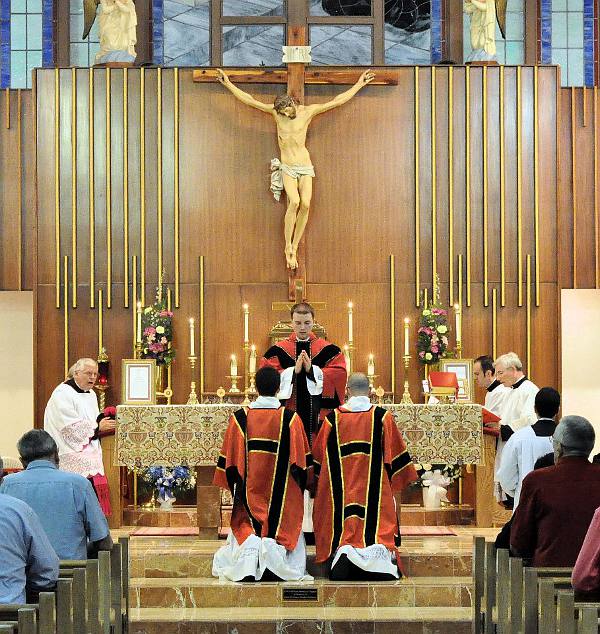
Bildet over (syns jeg) har et 50-tallspreg, både kirkerommet og messeklærne. Det passer for så vidt godt med min instilling, for jeg syns dagens katolske liturgi skal baseres både på det nye, det gamle og det «halvgamle». Kirken lever og utvikler seg kontinuerlig og naturlig, derfor bør dagens liturgi bære sterkt preg av tidligere tiders liturgi (for Kirken har aldri hatt noe brudd), og etter min mening er det en styrke at den nye om den gamle messen nå lever side ved side.
Om messen som er avbildet over kan man lese følgende (tips fra TLM-bloggen):
The Reverend John Reutemann, assisted by the Reverend Michael Paris and the Reverend Mister Sam Plummer celebrated a solemn high Mass of the Roman rite for the feast of the Triumph of the Holy Cross on Friday, September 14 at the church of the Sacred Heart in La Plata, Maryland. The ministers were assisted by seminarians and priests attending in choir of the Archdiocese of Washington.
Tidlig tirsdag morgen leser jeg (på nettsidene til Oslo kirkelige fellesråd) om mandagens vedtak i Oslo bispedømmeråd:
Bispedømmerådet bestemte mandag:
Kun fem sokn i Groruddalen
Fra årsskiftet vil Den norske kirke bare ha fem sokn i Groruddalen, mot dagens elleve. Bispedømmerådet anbefaler også at Bredtvet kirke fristilles, med tanke på salg eller utleie til Den katolske kirke.
Planene om salg eller utleie av Bredtvet kirke i Groruddalen til katolikkene er kommet et viktig skritt lenger. Etter at Oslo bispedømmeråd har anbefalt en slik løsning, er det opp til Oslo kirkelige fellesråd å ta den endelige avgjørelsen. ….
En av de godt voksne og seriøse prestebloggerne i England, Fr. Tim Finigan, holdt nylig et foredrag ved the Catholic Theological Association Annual Conference, kalt «New Movements and New Media«. Der sa han bl.a. om blogging:
The rise of the Catholic blogosphere was not something engineered by Pope Benedict, though his election proved to be a focal point for many new bloggers at a time of growth. What he has done is to encourage this phenomenon and to give some fatherly guidance. Three successive annual messages for World Communications Day were devoted to the digital media. In 2009, the Holy Father spoke of how new technologies had brought about a shift in patterns of communication and human relationships. He addressed the “digital generation” encouraging the promotion of human understanding and solidarity. Remarkably he addressed the concept of Christian friendship in the context of a digital concept of “friend”, a clear reference to Facebook. Towards the end of his message, he appealed to young Catholics:
It falls, in particular, to young people, who have an almost spontaneous affinity for the new means of communication, to take on the responsibility for the evangelization of this «digital continent». Be sure to announce the Gospel to your contemporaries with enthusiasm. You know their fears and their hopes, their aspirations and their disappointments: the greatest gift you can give to them is to share with them the “Good News” of a God who became man, who suffered, died and rose again to save all people.
The following year, the Holy Father addressed priests particularly. He spoke of the way in which digital communications offer priests new possibilities for proclaiming the word of God.
The spread of multimedia communications and its rich “menu of options” might make us think it sufficient simply to be present on the Web, or to see it only as a space to be filled. Yet priests can rightly be expected to be present in the world of digital communications as faithful witnesses to the Gospel, exercising their proper role as leaders of communities which increasingly express themselves with the different “voices” provided by the digital marketplace. Priests are thus challenged to proclaim the Gospel by employing the latest generation of audiovisual resources (images, videos, animated features, blogs, websites) which, alongside traditional means, can open up broad new vistas for dialogue, evangelization and catechesis.
Since April 2006, my blog has had six and a half million page views from nearly 4 million visitors. Other priests I know have up to ten times the number of readers that I have. Even a relatively low traffic blog by a priest who simply posts his sermons each week would get in excess of 200 unique visitors per day. There is no way that we would reach that number of people by preaching in Church or even by standing on a soap box in the local shopping mall. A priest who blogs is made acutely aware of his responsibilities by the (unmanageable) correspondence that he receives from the faithful who are grateful, confused by things that have happened in their local Church, in need of prayer, or puzzled by some aspects of Catholic doctrine. Whatever criticisms we might have of individual priests’ blogs this platform is certainly a means that can be used for evangelisation.
In 2011 Pope Benedict addressed the question of the internet a third time. He spoke of a vast cultural transformation parallel to the industrial revolution. I would suggest that it is also parallel to the invention of moveable type, something especially relevant to evangelisation. In this message he addressed the dangers of “cyberspace” particularly in regard to personal authenticity. He also reaffirmed that direct personal contact can never be replaced by virtual friendships and that such contact was fundamental for the transmission of the faith. He called us back to Christ:
In the final analysis, the truth of Christ is the full and authentic response to that human desire for relationship, communion and meaning which is reflected in the immense popularity of social networks. Believers who bear witness to their most profound convictions greatly help prevent the web from becoming an instrument which depersonalizes people, attempts to manipulate them emotionally or allows those who are powerful to monopolise the opinions of others.
In these messages, Pope Benedict used his authority, which is hugely respected by many Catholic bloggers, to offer a deeper vision of social communication and to invite us to an examination of conscience which is necessary from time to time when communication is made so easy, effective and powerful.
Det engelske tidsskriftet The Tablet liker ikke blogging noe særlig, soesielt ikke konservative, katolske blogger, og skriver:
[T]he use of social media, particularly blogs and tweets, where instant reaction is coarsening debate. And it’s evident not just in politics but in religion too, particularly in comment over the same topics that cause such vitriol in politics: life and death issues, sex, marriage, gays. Friends who work at The Guardian tell me that great care has to be taken in monitoring its website whenever Catholics write opinion pieces, given the aggression of many readers’ instant responses to them.
Critics of the Church and of Catholics are not only to blame. Nasty, unChristian remarks abound within the Catholic world. No wonder one Catholic journalist says he won’t read the most vicious sites of the Catholic blogosphere any more: he views them as an occasion of sin. But what’s worrying is that Rome is apparently keen to read them too.
The Vatican itself has become adept at using new media – check out YouTube, its tweets, its websites – realising the power of these twentyfirst-century opinion formers. The word is that Vatican officials are gleaning much of their “knowledge” of the Church beyond Rome from blogs, including those that have made spite their signature dish.
If we have reached a stage when Rome’s views are shaped by bloggers’ vitriol rather than the opinions of its nuncios and its bishops, let alone sounding out the people in the pews who pray and pay, then something deeply distorted is developing. It’s certainly no way for Rome to learn to talk human. (Father Z. kommenterer dette her – svært kritisk til the Tablet.)
Jeg har selv blogget i over 7 år, har ca 200 besøk pr dag, og fått kjeft noen ganger. Personlig syns jeg nok det kan være ubehagelig å lese kommentarer i blogger, nettaviser o.l., mens innleggene/sidene selv ofte er nyttige. Jeg har sensurert en del innlegg på min egen blogg, og f.eks. er kommanterene på Vårt Lands Verdidebatt hovegrunnen til at jeg besøker denne fellesbloggen forholdsvis sjelden.

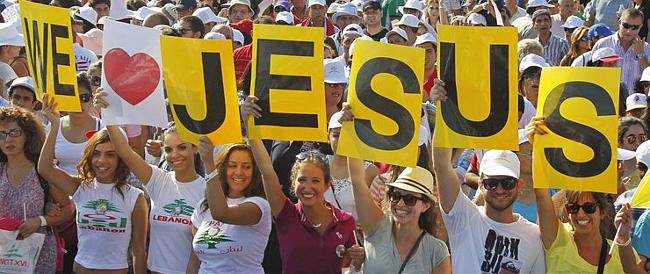
Pave Benedikts besøk i Libanon får ganske positiv omtale, her fra to ikke-katolske kilder, BBC og og avisa Dagen.
Sistnevnte har nylig skrevet flere positive artikler om vår Kirke – bl.a. om St Paul menighet her – og betrakter tydeligvis katolikkene nå som (nokså vanlige) kriste – «I love jesus» på bildet over viser jo dette.
I forbindelse med femårsjubileet for Summorum Pintificum spør noen father Z. hva de kan gjøre for å få den tradisjonelle messen feiret der de selv bor:
«I wanted to drop you a note to tell you what a positive response I got from our pastor here in ____ when I asked about the St. ___’s hosting an extraordinary form Mass. He said yes right away and put me to work on the planning. The first EF Mass will take place on …. Please say a prayer that a stable group might take enough interest to make this a permanent Mass on the Sunday schedule.»
I get lots of email asking how people can get a TLM in their parish? The first step is: ASK. You would do well to have a group of people who ask.
You will have to be willing and ready to do all the work to make it happen. You will have to be willing to buy, find, provide, donate all the things necessary for the worthy celebration of the Extraordinary Form.
You should be ready to step up and give Father an airplane ticket to someplace where there is a workshop for priests to learn the TLM. In other words, don’t just ask for something and then expect Father to do it. This goes for anything you would like to see in a parish. ….
For meg er det i løpet av disse årene blitt helt naturlig å feire både den tradisjonelle og den nye messen, men det er fortsatt nokså få prester som gjør det (er de redd for motstanden, for ekstraarbeidet med å lære noe nytt, liker de ikke Kirkens gamle tradisjon?). Jeg ser heller ikke så veldig forskjell mellom de to formene av messen, i alle fall når man feirer den nye messen i lys av tradisjonen (som jeg selv gjør).
Det har de siste årene blitt helt normalt for meg å lære av Kirkens tradisjon også når det gjelder liturgiske spørsmål (ikke bare når det gjelder historie og teologi); men for veldig mange mennesker førte slutten av 60-tallet til et dramatisk brudd liturgisk sett, helt unødvendig og svært skadelig etter min mening – dette er et brudd som må leges så snart som mulig.
Slik skriver Father Z. om dagens jubileum:
Today is the anniversary of the happy day when Summorum Pontificum went into force. A lot of progress has been made but there is still a great deal to do.
But consider the fact that, even though many seminaries and even bishops are resisting the formation of priests for the whole of their Roman Rite, after five years, all the major seminarians in formation now have not known a time as seminarians when the provisions were not in effect.
It seems to me that, though sometimes it seems as if the wheels are spinning once in a while, this is going to get traction soon. And when it does….
Perhaps we shall see some great gains during this Year of Faith? Perhaps you can redouble your efforts to promote and stimulate and bring about a wider implementation of the provisions of the Motu Proprio.
Please say a pray for Benedict XVI today, who gave priests and laity alike this great gift.
Jeg feirer nå messe hver søndag morgen i Bredtvet kirke, og så vidt jeg vet er det førstkommende mandag Oslo (lutherske) bispedømmeråd egentlig skal avgjøre om vi katolikker får kjøp/ leie denne kirken. Det er min studiekamerat fra 30 år siden som uttaler seg om dette til NRK:
… Mange som bor i Groruddalen tilhører andre religioner, og behovet for kirker er ikke lenger like stort. Derfor skal Oslo bispedømmeråd bestemme seg for om de fire sognene i Grorud-området skal bli ett, og om de skal gi fra seg Bredtvet kirke.
Leder i Oslo bispedømmeråd, Harald Hegstad, mener at Bredtvet kirke vil være den beste kirken å gi slipp på, enten ved å selge eller leie den ut. …
Bloggen PrayTell er på ingen måte spesielt konservativt, det kan man se både på innlegg om kommentarer, men ofte tar de opp interessante og aktuelle (mest) liturgiske spørsmål. Nylig spurte de om hvilke liturgiske feil prester gjør, som (uten at de ønsker det) kan føre til en konservativ reform av liturgien. I innlegges nevnes det to slike feil; det ene er at presten begynner messen med et rungende «Good morning!», og det andre er at han løfter hostien og kalken høyt opp under konserkrasjonen (dvs mens han sier ordene), ser på menigheten hele tiden, og på en måte «spiller» handlingen for dem. Slike ting ser man ofte i USA, men jeg har heldigvis aldri sett det i Norge.
I en kommentar skriver Fr. Allan J. McDonald interessant om dette:
We have to keep in mind that many priests my age and older (in their 50′s and forward) were taught and had modeled for us the Fr. Eugene Walsh school of celebrating Mass which is a model that has the priest trying to engage the “assembly” with a smile on one’s face and dramatic gestures towards them to embrace them and pull them into the “action” of the Liturgy.
He encouraged dramatic eye-contact with the congregation not only in reading the lessons, I mean, proclaiming the Scriptures and having an “informal” formality, a kind of “living room” approach to connecting the priest to the assembly and the assembly to one another and to the priest. What this leads to is a “false” liturgical familiarity with the assembly, proclaiming not only the Scriptures to the assembly but also the prayers, all the prayers, and reading these as though they are directed to the assembly, not only with gestures, but with eye contact and moving one’s eyes and head toward the assembly so that each person present feels as though they are pulled into the “action” of the prayer.
Facing the congregation directly by not only the priest but also the choir or ensemble leading the music gives an air to the entertainment model of assemblies that so many experience today when they attend Mass even if no rubrics are actually challenged or words changed, but the latter two do occur and rather frequently in innocuous and blatant ways. And when the priest faces the congregation for prayer, many often comment that they like this, that or another priest or dislike him because of his demeanor and visual piety thus developing the “cult the celebrity priest or the villain priest” based upon the visual features and piety of the priest’s face. …
For noen år siden arbeidet jeg sammen emd en prest som ofte ga uttrykk for at han ikke hadde noe sans for eller respekt for kirkeretten. Jeg tenkte på det da jeg nylig leste om et foredrag kardinal Burke holdt om kirkeretten i slutten av august. Om det foredraget leser vi bl.a.:
Lamenting a clerical culture dismissive of canon law in the decades following the Second Vatican Council, Cardinal Raymond Burke addressed a Kenyan canon law convention on August 28 2012 about “the essential service of canon law in the work of the new evangelization.”
“After I began my studies of Canon Law in September of 1980, I soon learned how much the Church’s discipline was disdained by her priests, in general,” he recounted. “Institutes of the Church’s law, which, in her wisdom, she had developed down the Christian centuries, were set aside without consideration of their organic relationship to the life of the Church or of the chaos which would necessarily result from their neglect or abandonment.”
“The ‘hermeneutic of discontinuity and rupture,’ which has tried to hijack the renewal mandated by the Second Vatican Ecumenical Council, is marked by a pervasively antinomian culture, epitomized by the Paris student riots of 1968, and has had a particularly devastating effect on the Church’s discipline,” he continued
. “It is profoundly sad to note, for instance, how the failure of knowledge and application of the canon law, which was indeed still in force, contributed significantly to the scandal of the sexual abuse of minors by the clergy in our some parts of the world.”
The prefect of the Apostolic Signatura continued: The years of a lack of knowledge of the Church’s discipline and even of a presumption that such discipline was no longer fitting to the nature of the Church indeed reaped gravely harmful fruits in the Church. For example, I think of the pervasive violation of the liturgical law of the Church, of the revolution in catechesis which often rendered the teaching of the faith vacuous and confused, if not erroneous; of the breakdown of the discipline of priestly formation and priestly life, …..